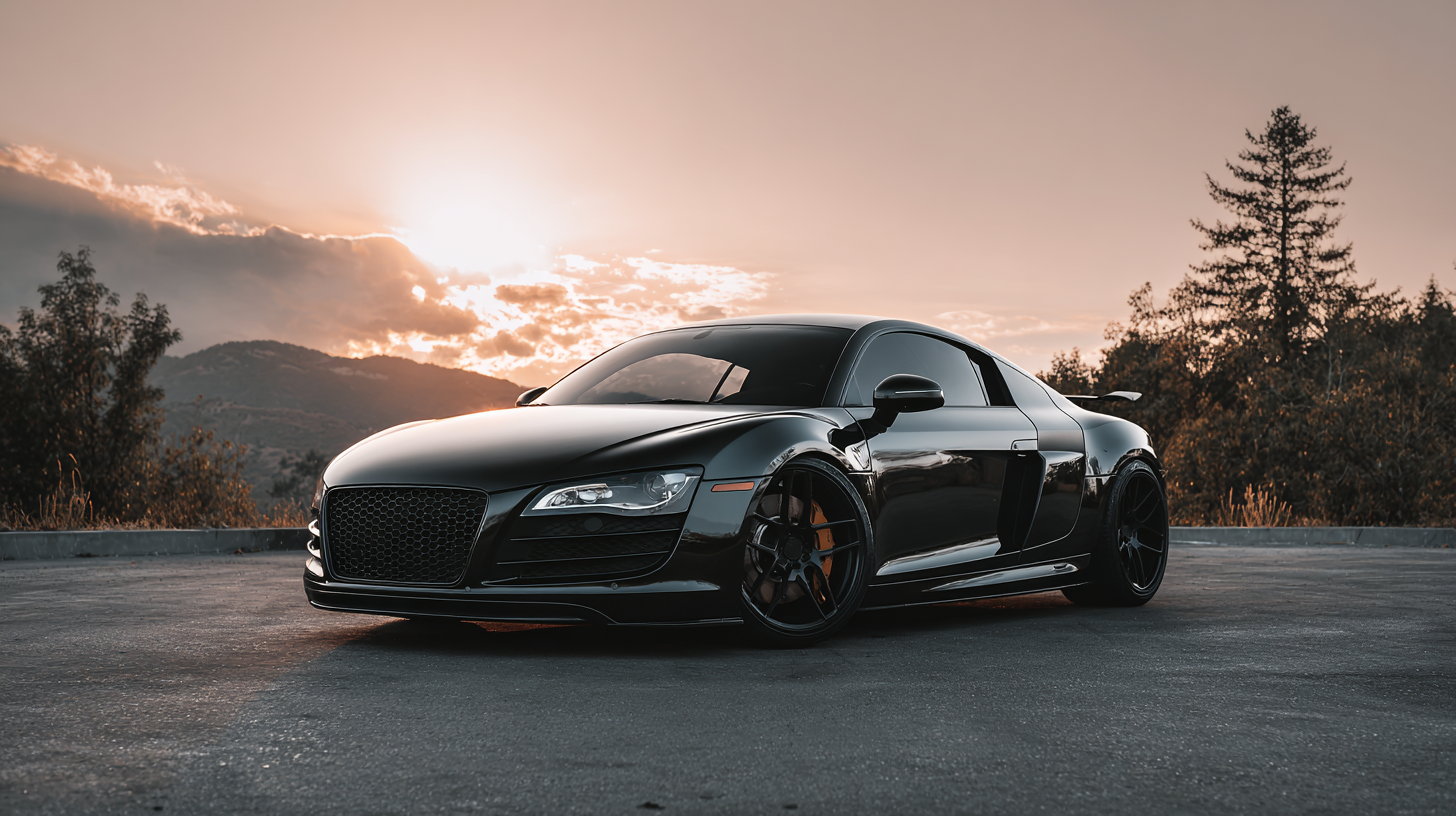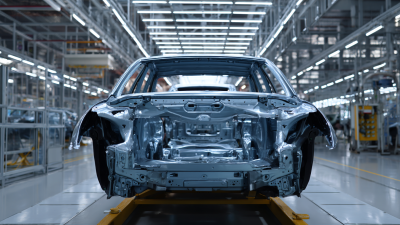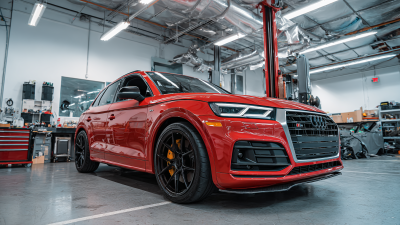
The Ultimate Guide to Choosing the Right Car Bodikit for Your Vehicle
Choosing the right Car Bodikit for your vehicle can significantly enhance its aesthetic appeal and performance. In recent studies, the demand for aftermarket customization has surged, with the global automotive body kit market expected to reach approximately $3.1 billion by 2027, growing at a CAGR of 3.2% from 2020 to 2027. This reflects a growing trend among car enthusiasts who seek to personalize their vehicles, not just for aesthetics, but for improved aerodynamics and handling. However, with the myriad of options available, selecting the ideal Car Bodikit can be overwhelming. Factors such as material type, design compatibility, and installation requirements play a crucial role in decision-making. This guide aims to simplify the selection process, providing you with insights into various Car Bodikit options tailored to meet both performance needs and personal style preferences.

Understanding Different Types of Car Bodikits and Their Features
When choosing the right car bodikit, understanding the different types available is crucial for enhancing both aesthetics and functionality. Various bodikits cater to diverse preferences, from aggressive styling for sporty models to subtle enhancements for luxury vehicles. For instance, sporty bodikits often feature aerodynamic elements that improve performance and give the car a racing look. In contrast, more refined kits offer sleek contours that elevate the elegance of luxury cars.
Recent trends highlight the versatility of bodikits across different models. Vehicles like the modified Toyota showcase fully custom designs that not only transform their appearance but also set them apart from standard models. The latest iterations of popular cars, such as those featuring vibrant body kits, emphasize individuality and style, appealing to enthusiasts who want their vehicles to make a statement. Additionally, tech-rich updates seen in new models often complement these designs, creating a harmonious blend of cutting-edge technology with stylish body enhancements.
Factors to Consider When Choosing the Right Bodikit for Your Vehicle
When it comes to enhancing your vehicle’s aesthetic and performance, choosing the right bodikit is crucial. There are several factors to consider that can make or break your decision. First, think about the compatibility of the bodikit with your vehicle's make and model. A well-fitted bodikit not only looks better but also ensures that your car maintains its structural integrity.
Tip: Research your vehicle's specifications and the types of bodikits available. Look for reviews and feedback from other users who have installed similar kits to see how they perform.
Another important factor is the material used in the bodikit's construction. High-quality materials, such as fiberglass or polyurethane, offer durability and resistance to wear and tear. This ensures longevity, alleviating the need for frequent replacements or repairs.
Tip: Always check the weight of the bodikit. A lighter kit can improve performance, while a heavier kit may affect your vehicle’s overall handling and fuel efficiency. Consider your driving style and needs when making a selection to ensure the perfect match.

How to Assess Compatibility Between Your Car and Desired Bodikit
When selecting a bodikit for your vehicle, understanding compatibility is crucial to ensure both functionality and aesthetic appeal. The first step is to identify your vehicle’s make, model, and year. Different cars have unique dimensions and body styles; thus, a bodikit designed for one model may not suit another. It is essential to consult manufacturer specifications or trusted automotive forums to find bodikits specifically tailored for your car.
Another vital aspect to consider is the material and design of the bodikit. Some vehicles are better suited for fiberglass kits due to their flexibility, while others may require more robust materials like polyurethane for durability. Additionally, evaluate how the desired bodikit aligns with your vehicle’s existing features, such as headlights and bumpers, to maintain a cohesive look. Taking these factors into account helps ensure that your bodikit not only complements your car's design but also adheres to safety regulations and performance requirements.
Installation Tips: DIY vs. Professional Help for Bodikit Fitting
When it comes to fitting a bodikit to your vehicle, one of the most critical decisions revolves around choosing between a DIY installation and seeking professional help. For the DIY enthusiasts, installing a bodikit can be a fulfilling and cost-effective endeavor. It allows for greater customization and hands-on experience. However, it’s essential to possess the right tools and skills. Taking the time to thoroughly research installation techniques and gathering the necessary equipment is vital. Many online tutorials and forums can serve as helpful guides, but one must ensure they are well-prepared to handle any unexpected challenges that may arise during the process.

On the other hand, opting for professional help offers the advantage of expertise and efficiency. Experienced technicians can ensure that the bodikit is fitted correctly, which can prevent potential issues such as poor alignment or damage to the vehicle's body. This route is particularly beneficial for those who may lack experience or confidence in their DIY abilities. Furthermore, professionals often provide warranties for their work, adding peace of mind. Ultimately, the choice between DIY and professional installation should align with your comfort level, budget, and desired outcome for your vehicle's new look.
Maintenance Best Practices to Ensure Longevity of Your Car Bodikit
When it comes to maintaining your car bodikit, regular care is essential for longevity and performance. According to a study by the International Journal of Automotive Technology, proper maintenance can extend the life of car body kits by as much as 30%. This is largely attributed to routine inspections and addressing any minor issues before they escalate.
Tips: Always clean your bodikit with pH-balanced car soaps to avoid damaging the surface. For painted bodikits, use a protective wax every three months to shield against UV rays and environmental contaminants.
In addition to regular cleaning, it is crucial to protect your bodikit from physical damage. Reports from the Society of Automotive Engineers indicate that artificial elements like debris and road chemicals can significantly degrade the material. Applying a clear protective film can help mitigate these risks.
Tips: Store your vehicle in a garage or under a cover when not in use to minimize exposure to the elements, which can cause premature wear and tear on your bodikit. Regular inspections can identify scratches or chips that need immediate attention, preventing further deterioration.
Related Posts
-

7 Amazing Reasons to Choose the Best Car Bodikit for Your Global Business
-

Unleashing the Power of Chinese Manufacturing: The Global Rise of the Best Car Bumper
-

Ultimate Guide to Choosing the Perfect Car Bodikit for Your Vehicle
-

Unveiling the Top 5 Must-Have Car Bodikit Examples for Every Vehicle Enthusiast
-

How to Choose the Right Car Bumper for Your Vehicle Needs
-

Top Strategies for Maximizing Audi Parts Quality and Performance



